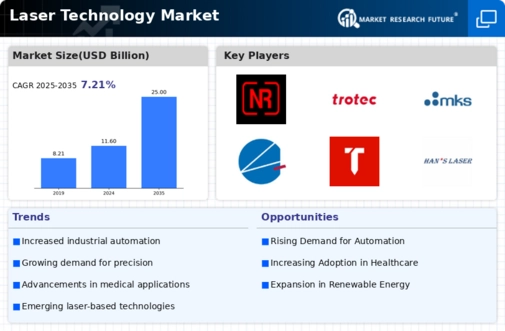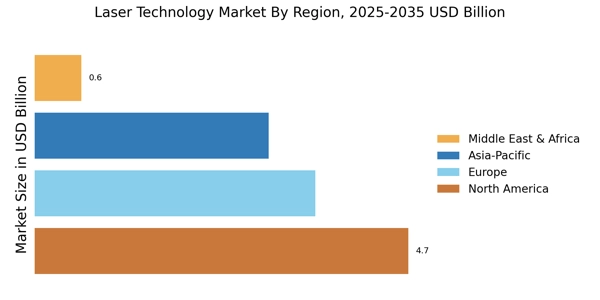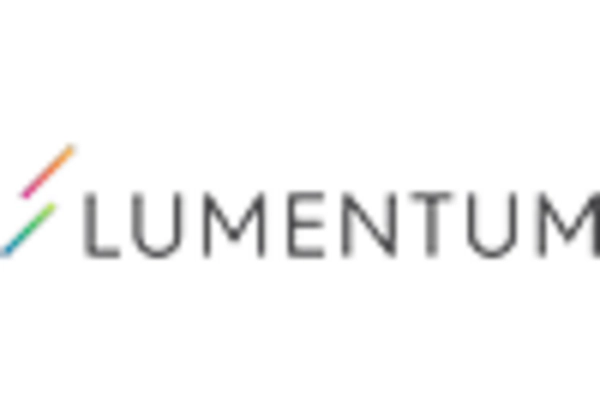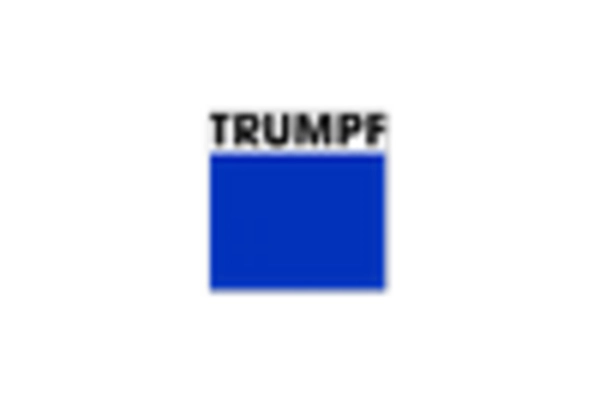The Laser Technology Market has witnessed significant growth and transformation, driven by advancements in laser applications across various industries, including manufacturing, healthcare, and telecommunications.In this competitive landscape, companies are increasingly focusing on innovation and technological development to maintain a competitive edge. The market is characterized by a mix of established players and emerging entrants, each vying for market share through strategic partnerships, product launches, and expansions.
Intense competition necessitates a continuous assessment of market trends, customer demands, and technological advancements, as companies aim to offer superior products and solutions that cater to diverse applications.Additionally, the global reach of these companies allows them to tap into emerging markets while addressing the needs of established regions, making competitive insights essential for navigating this dynamic landscape.
Amada Holdings has established a strong presence in the Laser Technology Market, showcasing its commitment to innovation and quality in laser solutions. The company is recognized for its advanced laser processing technologies, particularly in sheet metal fabrication.
Amada Holdings has leveraged its extensive experience to enhance its product offerings, focusing on systems that provide reliability and precision. This strength in technology and manufacturing capabilities has positioned the company favorably within the competitive framework of the market.
Its robust research and development activities have facilitated the launch of cutting-edge laser machines and systems that cater to the evolving needs of customers across various sectors. Amada Holdings’ emphasis on customer service and tailored solutions further strengthens its standing as a prominent player in the global landscape.
Nikon has carved out a significant niche in the Laser Technology Market, blending its expertise in imaging and precision optics with laser technology applications. The company is known for its range of innovative products and solutions tailored to various industries, especially in semiconductor manufacturing and material processing.
Nikon’s key offerings include high-performance laser systems that utilize advanced technologies, enabling high accuracy and efficiency in processes such as photolithography and laser machining. The company’s strong research and development strategy, coupled with its strategic partnerships and acquisitions, has fortified its position in the market, enabling it to leverage emerging technologies.
Nikon’s ongoing commitment to enhancing product performance and expanding its application range underscores its strengths in the competitive landscape of global laser technology, allowing it to build a robust portfolio that meets the diverse needs of its clientele.


















Leave a Comment